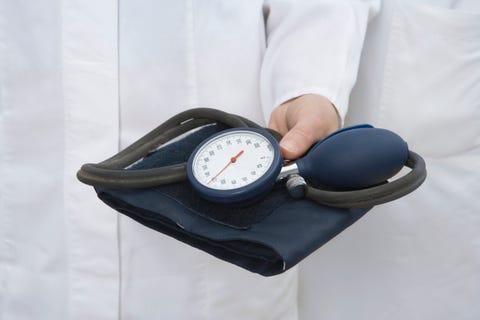
Last year, 43-year-old Jay Ashman took a routine blood test the morning after a vigorous leg workout at Kansas City Barbell. A few days later, the former rugby player got a call from his doctor saying two key indicators of kidney function were abnormal.
“I went into panic mode,” he recalls. “I was thinking kidney failure, dialysis, dying early, all kinds of crap.” But additional testing determined his kidneys were normal. Heavy weightlifting had skewed the initial readings.
Abnormal blood-work results are actually a common issue among men who work out hard or compete in extreme events. That’s because most lab reference ranges are based on the general population, not avid exercisers, explains Spencer Nadolsky, D.O., a board-certified family-medicine and obesity physician in Maryland. “You need to look at labs in the context of each patient. Otherwise it can cause a lot of worry or excessive testing.”
There aren’t any stats on how many athletic guys are affected, but more men than ever are exercising harder and harder. The number of half marathons is at an all-time high, more than 4.5 million people complete obstacle-course races annually, and experts say that high-intensity workouts are more popular than ever.
Frequent, intense, or sustained exercise can change your body from the inside out, which can raise red flags on routine blood tests. Here’s what you need to know to protect yourself.
Don’t Stress the White Coat

Getty ImagesfStop Images
New research reveals that “white-coat hypertension” — the stress of being in a medical environment — is not benign. It can be indicative of how your BP increases in response to stressful situations.
If you’re among the estimated 30 percent of people whose BP usually spikes when they visit the GP, ask your doctor about wearing an ambulatory 24-hour monitor to record blood pressure throughout the day. This will provide the most accurate assessment.
Don’t forget: The new normal for blood pressure is 120 systolic over 80 diastolic.
If You Lift Weights

Getty ImagesIbrakovic
. . . Then Your Creatinine May Be High
Normal range: 0.9 to 1.3 mg/dL
Normal change with strength training: 10 to 20 percent higher
That’s Not All, Lifters

Getty ImagesJUAN GARTNER
Your White-Blood-Cell Count May Also Be High
Normal range: 4,500 to 11,000 white blood cells per microliter
Normal change with strength training: Increase up to two thirds
If You Do Crossfit

Getty ImagesHero Images
. . . Then Your Creatine Kinase May Be High
Normal range: 44 to 196 units/liter
Normal change with exercise: Up to five times the upper limit
If You’re a Bodybuilder

Getty Imagesantondotsenko
. . . Then Your AST and ALT May Be High
Normal range: 10 to 40 units/liter for AST; 9 to 46 units/liter for ALT
Normal change with exercise: Up to double the high end of normal levels
If You Run

Getty ImagesChristopher Malcolm
. . . Then Your Red-Blood-Cell Count May Be High
Normal range: 4.5 million to 5.9 million cells per microliter
Normal change with running: About double the high end of normal
If You Do Lots of Cardio

Getty ImagesPekic
. . . Then Your Total Cholesterol May Be High
Normal range: Under 200 mg/dL
Normal change with cardio: Levels 200 or above, depending on HDL
If You Cycle

Getty Imagespat138241
. . . Then your PSA Levels May Be High
Normal range: Under 4 nanograms per milliliter
Normal change with cycling: Up to 10 percent higher
Source: Read Full Article
